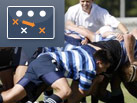
The key to good defense is communication and trusting your teammates inside and outside. There are a few important rules when it comes to blind side defense from the scrum.
Scenario A : #8 picks and goes with wing out wide, scrumhalf stays at the base.
Good Blind Side Defense.
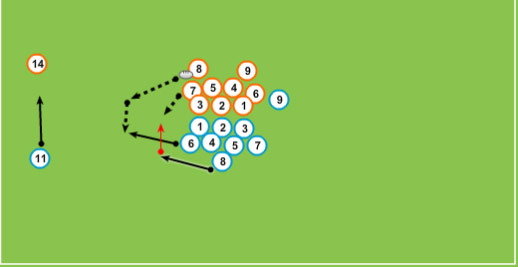
• Defending flanker shuts down breaking #8.
• Wing stays on wing out wide.
• Defending #8 covers the inside pop or slip tackle.
Scenario B: #8 picks & goes with scrumhalf in support & winger out wide.
Good Blind Side Defense:
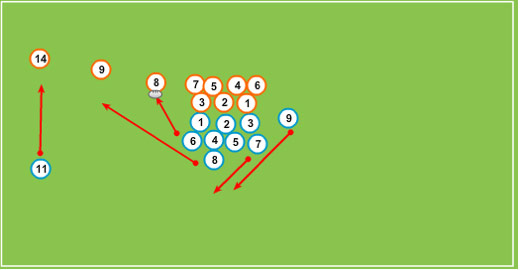
• Defending flanker shuts down the first threat which is the attacking #8, this buys time for the
defending #8 to get across and cover and also closes the gap on the fringe of the scrum.
• #8 slides across to defend the attacking scrumhalf.l
• Wing stays on wing.
• Defending open side flanker and scrumhalf must work hard to get back.
Poor Blind Side Defense:
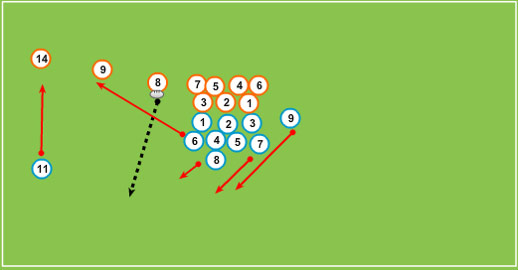
• Defending flanker pushes out and leaves the inside 'fringe' channel exposed which
allows attacking #8 to break. The defending #8 can sometimes struggle to fill that space
if the scrum is under pressure from a right shoulder.
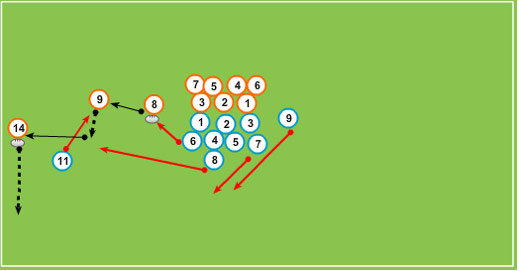
• Wing shoots in causing an overlap on the outside.
• Simple draw and pass and the attacking wing is away.
by Greg Commins | rugbyIQ.com coach

